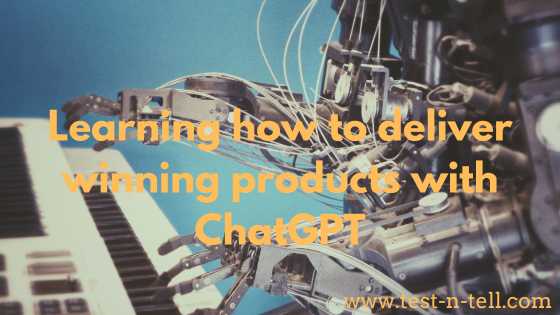In the past post, we talked about product discovery. That's something you should do before writing a single line of code. It will provide you with vital information about your customers, their needs and the qualities your future product should possess to be successful.
Having a good idea of what product you want to create, for whom and why - it's time to move forward into the solution space. During the product delivery, you'll work with multiple other roles necessary to bring a product to life. Let's learn the basic PM activities during this stage with the help of generative AI.
Product Backlog
To efficiently deliver your product, you need to describe what it should be, what qualities it should possess and how will you evaluate if it's done. A product backlog is the space PMs use to describe all that. Here are the prompts you can use with generative AI to learn how to create and manage your product backlog:- How do I create a product backlog?
- What are the DEEP principles of backlog creation?
- What is the difference between epics, stories and tasks in a product backlog?
- Give me an example of a user story
- Test my user story [user story details]
- Write a user story for [feature description]
- What is jobs-to-be-done?
- What are the tools available to create a product backlog?
- What is PRD?
- When do you write PRD and when are user stories?
- What are non-functional requirements?
- What is tech debt?
- How to keep a balance between new features, fixing bugs and tech debt?
Prioritisation
Having your product backlog is a great start, the next step is to decide what to build first. To do that you need to learn different prioritisation techniques PMs use to effectively deliver products to the market. Here are the prompts you can use:- How do I prioritise my product backlog?
- How do I use the impact-effort matrix to prioritise a product backlog?
- How do I use the KANO model to prioritise a product backlog?
- How do I estimate the effort of a product backlog item?
- Why would I use story points and not timeboxing when estimating a backlog item?
- How do I visualise a prioritised backlog?
Planning
One of the trickiest activities of a product manager is to plan a product delivery and manage expectations around it. At this stage, you usually have a number of stakeholders who should be kept informed and some invited to participate in the planning. Doing it right is part art part science, but you can start learning by asking the following questions:
- How do I plan an iteration as a product manager?
- Who should be involved in the product planning process?
- What is a sprint in Agile?
- How to calculate an Agile team capacity for a sprint?
- What is an Agile team velocity?
- How do I define a release as a product manager?
- What is capacity planning in product development?
Roadmap
Keeping everyone informed about the delivery progress is a difficult task. Having a roadmap could make this a tiny bit easier. However, you need to be careful about the kind of roadmap you create, you need to keep it updated and you need to share it with the right people. Some of the helpful information on roadmaps you can learn by using these prompts:
- What is a product roadmap?
- What are the most popular ways to create a product roadmap?
- How to create a Now, Next, Later roadmap?
- How to create a timeline-based roadmap?
- Provide examples of column-based roadmap
- What is the roadmap for [product name]?
- Suggest tools to create product roadmaps
- How to communicate a product roadmap to stakeholders
- How often should I update a product roadmap?
Testing
Product quality is one of the most important aspects to consider during product delivery. Usually, testing is handled by the dedicated QA team. However, as a product manager, you need to know how QAs are doing it and you also need to do your own testing. As a PM you are responsible for the entire product so be sure to pay enough attention to the testing:
- What is user acceptance testing?
- What is the difference between UAT and QA?
- What is happy flow testing?
- What is a beta test?
- How can I use MVP to test my product?
Product launch
One of the most exciting stages in any product manager's life. And one of the most stressful. There are tons of things to consider, people to talk to and activities to perform. You will collaborate heavily with other departments on your product launch. What are the must-haves of a product launch and what you personally should do? - ask a chatbot:
- How to describe a product release to users?
- How to prepare for a product release?
- Provide the latest changelog for [product name]
- How to write a press release for a new product?
- Write a press release for [description of your product]
- Write marketing battle cards for [description of your product or a product name]
- Suggest USPs for [description of your product or a product name]
Congratulations! Now you know the basics of product delivery and you will at least understand what your colleagues are talking about. Surely, there are tons of nuances at every stage of product delivery that I encourage you to learn. Moreover, the methods of product delivery are constantly evolving. Some companies have their preferred methods or customisations to the industry standard processes. But basics will be relevant always and will help you in any environment. In the next post, we'll talk about product growth.
